April 22, 2025
Kathy Nishimoto Masaoka, a child of WWII incarceration survivors, was born and raised in multicultural Boyle Heights, California. She served as a high school teacher for three decades and is a longtime activist still organizing today. Her values were shaped in the 1960s by the anti-Vietnam War movement and Asian American Studies at UC Berkeley. Since the 1970s, Kathy has organized around issues related to youth, worker rights, and housing, and she helped lead the 1980s Redress Movement. As a founding member and current Co-chair of Nikkei for Civil Rights & Redress (NCRR), Kathy served on the editorial team for the book NCRR: The Grassroots Struggle for Japanese American Redress and Reparations. Kathy is also involved in Nikkei Progressives, Sustainable Little Tokyo, and the National Nikkei Reparations Coalition, working on issues related to reparations for “Comfort Women” and African Americans, immigrant rights, and Little Tokyo’s future, among others.
In a conversation with Densho Staff Writer Jennifer Noji, Kathy reflects on the role of women in the 1980s Redress Movement and other Asian American social movements as well as her own lifetime of activism.
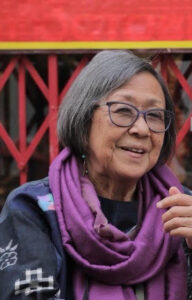
Reflections on the Early 1970s
Jennifer Noji: Can you offer an overview of the various women groups, coalitions, and women-led efforts that you were a part of throughout your life?
Kathy Masaoka: I think my involvement with women’s groups really started with the Asian American movement and getting involved in the 70s. Actually, the very first group I joined when I came back to LA in 1971 was a women’s group, the Asian Women’s group. The first meeting was at someone’s mother’s home in the Crenshaw area, and I came into this room with about 30 women all sitting around this large living room. I remember that very vividly, because it was very new to me to be coming together as Asian American women.
I had never been in a group like that before. It was a very strong group. We did things like skits about how women are treated in the movement, and trying to educate men and other people about not recognizing women’s roles, relegating women to making coffee or running off copies of things. We took that skit to the prison—to Chino Men’s Correction Facility. And we studied the book called Sisterhood is Powerful.
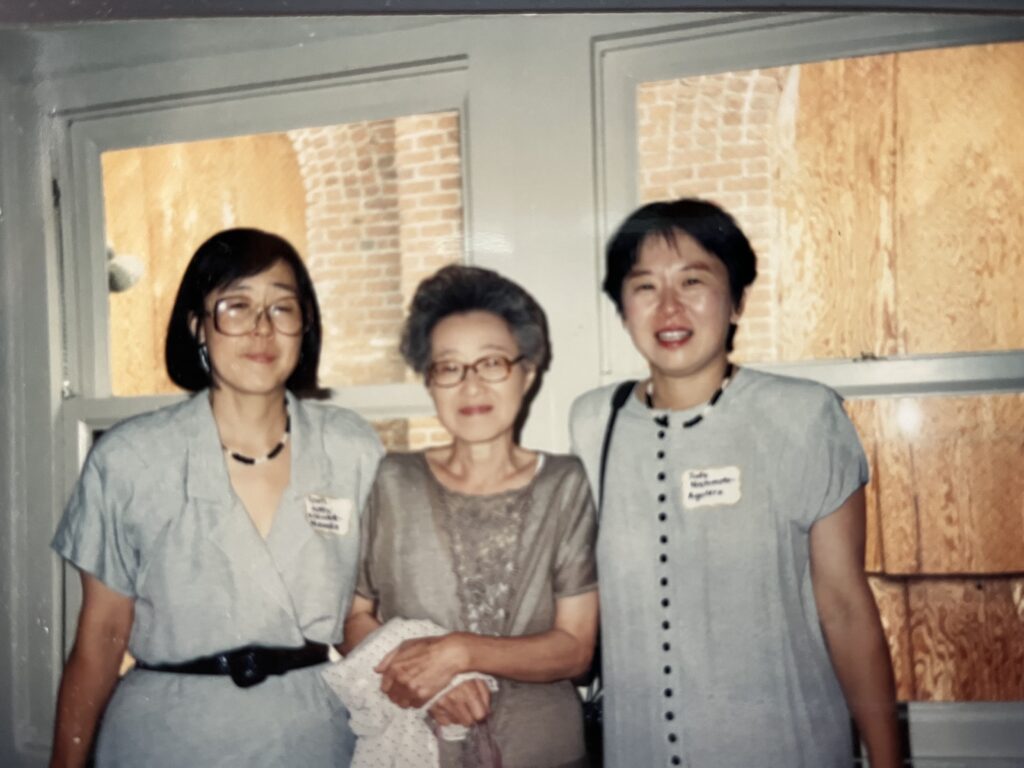
So that was one group, and it led to being involved in International Women’s Day. We joined coalitions not just of Asian women but of all women, and confronted for the first time the idea that we didn’t see ourselves as feminists, because we felt we weren’t just fighting for women. We were fighting for our community. We saw ourselves as women of color, and our community was on the same level, or maybe even first. So we often had some differences with the International Women’s Day groups, because they were putting feminism and women’s rights at the forefront, and we were trying to explain that, no, that’s not the way we see it.
This women’s group evolved into working with younger women, because in the early 70s, there was a really big drug problem, and we found that younger women were the ones that were overdosing the most. In 1971, thirty-one Japanese Americans overdosed, and most of those were young women. So we started thinking about: What is it that’s happening to young women in our community? And we realized that they had many things against them. One is that they were often abused by either their families or by their boyfriends, and maybe just having economic situations that were difficult.
So Merilynne Hamano and another woman started this group called Asian Sisters. And they called upon many of us who were older to be like bigger sisters to these younger sisters. We met in large groups together with them and tried to provide support.
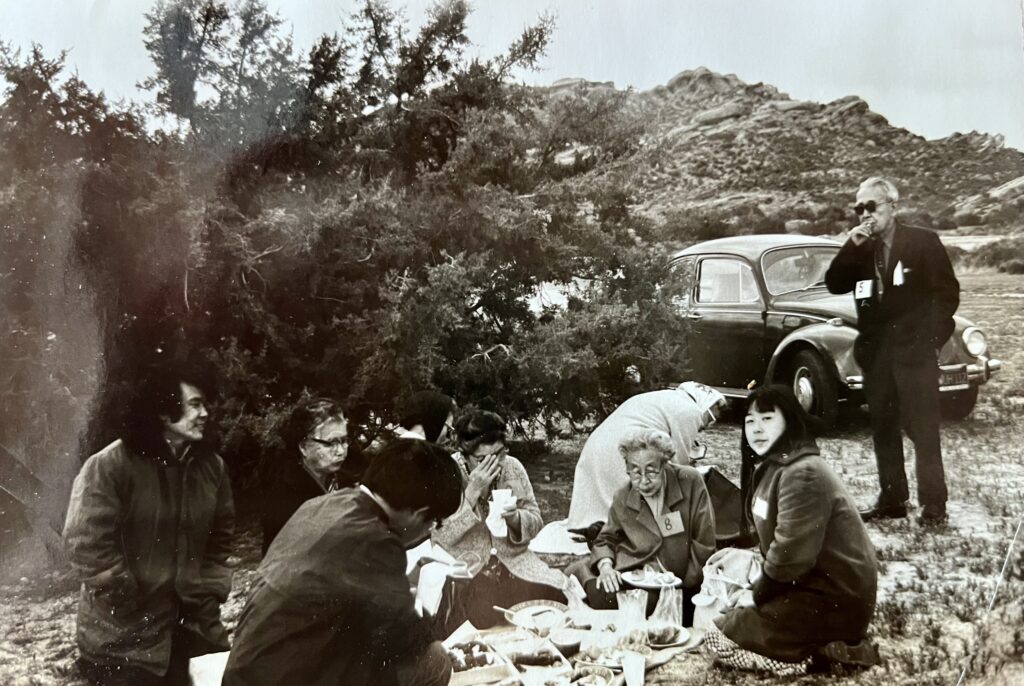
Then that evolved into the Asian Women’s Center. 1973, I believe, was when the Center opened. It was on Oxford Street in Koreatown, and it involved women working in different kinds of programs, such as a program for child care in Chinatown. It also had a section for drug problems. It became a place where people had meetings and gatherings. It didn’t last a really long time, because when things depend on funding and the funding ends, the programs end.
Those were some of the early Asian women’s groupings that I recall being involved with that were very intense, you know, took a lot of energy. With the Asian Sisters, it was emotionally draining and time consuming, because working with young people on drugs is not easy. You’re trying to work with their families, and the drug scene was very big. And you have to picture what was going on at that time. Our communities were still kind of emerging and recovering from the war and the camps, really. It’s very difficult when people are already on drugs, so we tried to work on prevention.
So we formed youth groups. We had Yellow Brotherhood with a group of about 25 young people. In Boyle Heights there was Young Spirits, which I was involved with. And we had young people that were working with the JACS [Japanese American Community Services] Asian involvement office in Little Tokyo. So you had all of these groupings of people, and it was usually the women that were the leadership. I’ve always seen women as leaders in most of the work that I’ve been involved with. Not that we were always recognized, but it just seems that the women, really, stood up to help lead a lot of the work and to form the groups.
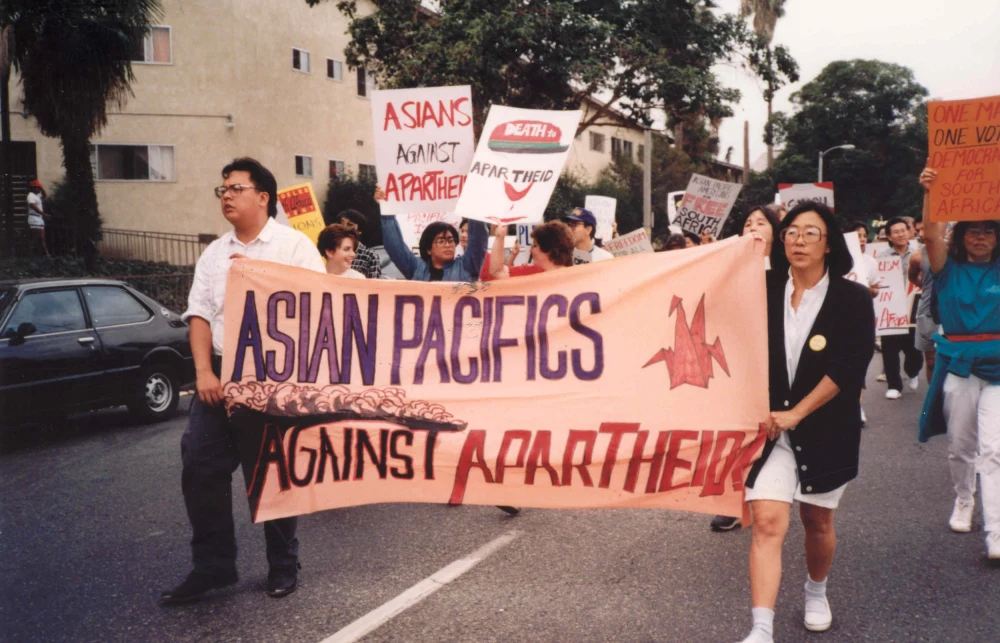
Reflections on the Late 1970s and 1980s Redress Movement
KM: So I’m trying to think of what evolved from the early movement. I guess in the late 70s and before Redress, we had a lot of political group formations—a lot of groups that were Marxist-Leninist groups. In LA, I was part of a community workers collective in Boyle Heights, which evolved into a political group called East Wind. But the men were mainly the theoretical leadership, and I feel like that was not a good space for women.
Personally for me, I did not necessarily see myself as a theoretical person, you know, in terms of a lot of the political discussions that were going on. I was more a person that felt comfortable in doing the work—working with the young people, working with the parents, working in the community. And I felt very estranged from myself when I tried to operate at that [theoretical] level. I don’t feel that way now, but at that time it was very alienating.
I think we haven’t really analyzed that period enough, because there was so much of that theorizing going on, that the work did suffer. It became theory over practice. And we always said theory and practice. If I think about it now, if we had more women leadership, I don’t think that would have happened, personally. It was always about theory, so I would say the late 70s kind of was consumed by that. It was not a pleasant period of time for me.
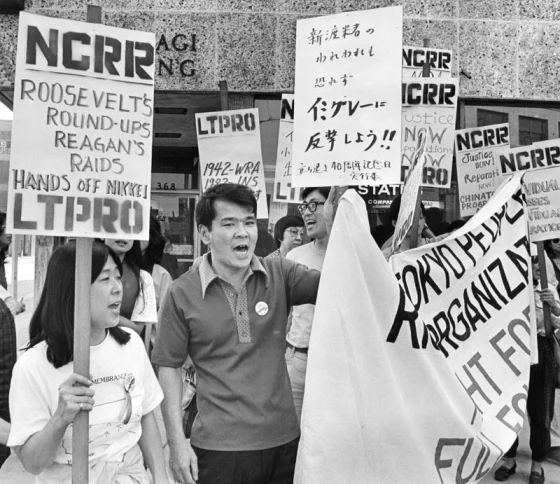
So I’m so grateful to the Redress movement, because it happened—in 1980! And it became the key movement and experience that taught us about ourselves and who we were. Within the Redress movement, we [in the National Coalition for Redress and Reparations (NCRR)] always talked about co-leadership. We always tried to have women and men co-chairs. And in programs, we often had men and women, older and younger, things like that.
We were fortunate to have people like Lillian Nakano, who was Bert Nakano’s wife. Bert Nakano was our spokesperson, but Lillian was a very strong voice too—not the face of NCRR, but she was sort of like the push. She was the energy behind a lot of things. Jim Matsuoka talks about Lillian pushing him at the [CWRIC] hearings to speak up for the Issei who were testifying but were told, “We’re running out of time, so maybe you could just turn in your testimonies.” And Lillian said, “Jim, you have to say something,” and Bert was the one who actually had to speak up for them. But you know, it’s those voices that are in the background that are pushing people.
But Lillian spoke up at [NCRR] meetings, and she would often contradict Bert. We saw that and we laughed at times, but it was a struggle. I have to admit that there was still lingering male domination. Often in meetings, a woman would say something, and then a man would say the same thing, and it would be, “Oh, that’s a great idea, Alan.” I say that because it happened to me a lot. I was co-chair with Alan towards the end of the 80s, during the period when we were in DC and the signing of the bill. And I was always perplexed, like, Why did that happen? Am I not being heard? Am I not speaking loud enough? Is it me that’s not expressing myself well enough? But now, when I think about it, that was just people’s orientation, like, “Well, he said that, so that must be it.” They just listened to the men more.
I am not as afraid now to say something like, “Well, you know, I just said that.” Then I wouldn’t say that. I would never speak up for myself.
JN: That’s so interesting. Thank you for sharing, Kathy.
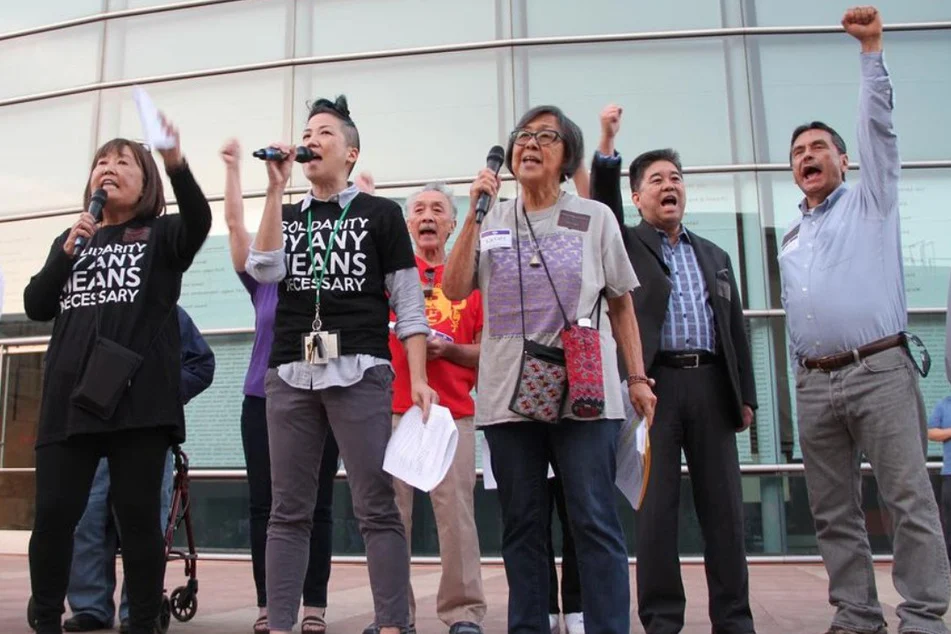
KM: There were times when I tried to say something even individually, and I think people found it hard to contradict the man. And that was a little disheartening at times. We haven’t really talked about these things much. I don’t think we as women supported each other as much as we could have or should have. It’s very hard to break that pattern.
So that’s kind of how it is, but there’s still elements of this today, I find. Like when I challenge a male person, even now, sometimes there is pushback. And I am less and less willing to blame myself or to say: Oh, I shouldn’t have said something. Oh, maybe I should have said it this way. Because I have been told by another woman that “you kind of came off harsh.” Well, you know what? Sometimes we come off harsh. I don’t have to couch my words so that others could find it palatable.
I remember that this is what I used to do. We often had committee meetings, and if there was some kind of error or mistake—something that a male person did—I would try to soften it and make them feel better about themselves. And I often wondered, why am I doing this?
But I did it, and it was always like, I don’t want them to feel bad. I would anticipate that when you tell them it’s their responsibility, they’re going to be embarrassed or feel bad. So I would soften it or make it sound not so bad, rather than saying: “This is what happened and you were responsible.” Which, in retrospect, was not good. People should know that they’re responsible for something. If they feel bad, they feel bad.
JN: Wow, thanks for sharing, Kathy. It’s so interesting to hear about your changing attitude and mindset. Is there anything else you would want to share about the role that you see yourself playing, or women playing, now with Nikkei Progressives or in NCRR’s work?
KM: Yeah. I mean, most of our coordinating committee are women. There are maybe three men that are active on the committee out of 12 or 15 people—women, younger women, older women. Women are the active organizers, leadership, and voice of Nikkei Progressives. If you look at the committees—you know, our Reparations committee, even our core group—all we see are women. There’s a few handful of men, maybe three or four, but the majority are women and the leadership are women. So you see mostly women everywhere stepping up.
And I think Jim Matsuoka often mentioned this, that women were the backbone of the redress movement. Whether or not we were at the forefront, or the face of NCRR, we were the backbone. Women were always doing the work—organizing the meetings or the mail outs. So I don’t think Redress would’ve happened without all the women. But I have to say, it wasn’t just women. But women were always the force that kept things going, connecting with others through outreach, working with the Nisei, and things like that.
JN: That’s really helpful. Thank you.
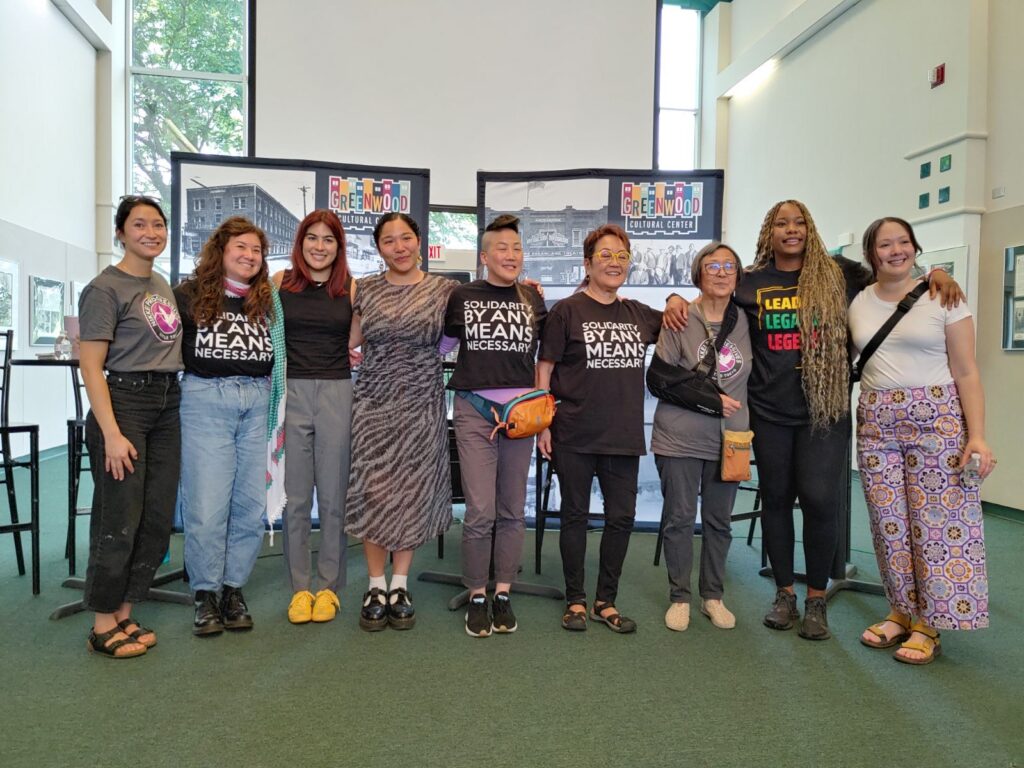
Reflections on the Present and Women in Activism
JN: I guess just very generally, I was wondering if you had any last messages that you might want to share about the role of women in social organizing, maybe to other women or younger women who want to get involved in activism today.
KM: Well, I feel like I don’t really have a message because there are so many women involved. It just seems like the majority of people that are active and providing leadership are women. So I feel like women are pretty strong. The younger women today feel pretty confident about who they are, and also people who don’t identify as women. I am actually really happy to see so many women—and people of other genders—involved in playing leadership roles and not afraid to say what they think.
I’ve seen a lot of growth in women [organizers] over the years. And I just want to say that they should trust their thoughts. They should also use assets that, I think, are feminine—to use their energy, the collective spirit, to connect people, to involve people while maintaining their own integrity and leadership. I think that many women are very skilled and talented, and they’re not afraid to use their skills and talents to support other people and to be involved. I think that’s a strength that women have that really is important to building the movement.
—
Densho had the privilege of conducting an oral history with Kathy in October 2023. Learn more about Kathy and her lifetime of activism in her oral history.
—
By Jennifer Noji, Densho Staff Writer and Project Coordinator
Additional Resources
Moscufo, Michela. “’Because We Know It Is Possible’: Japanese Americans Join Fight for Reparations.” NBC News, 2022, https://www.nbcnews.com/news/nbcblk/-know-possible-japanese-americans-join-fight-reparations-rcna11256.
“Japanese American Reparations: Lessons for Black America.” Pay the Tab, 2023, https://paythetab.org/episode/12-japanese-american-reparations-lessons-for-black-america.
NCRR: Nikkei for Civil Rights and Redress. https://ncrr-la.org/
NCRR: The Grassroots Struggle for Japanese American Redress and Reparations. UCLA Asian American Studies Center Press, 2018.
Nikkei Progressives. https://www.nikkeiprogressives.org/

